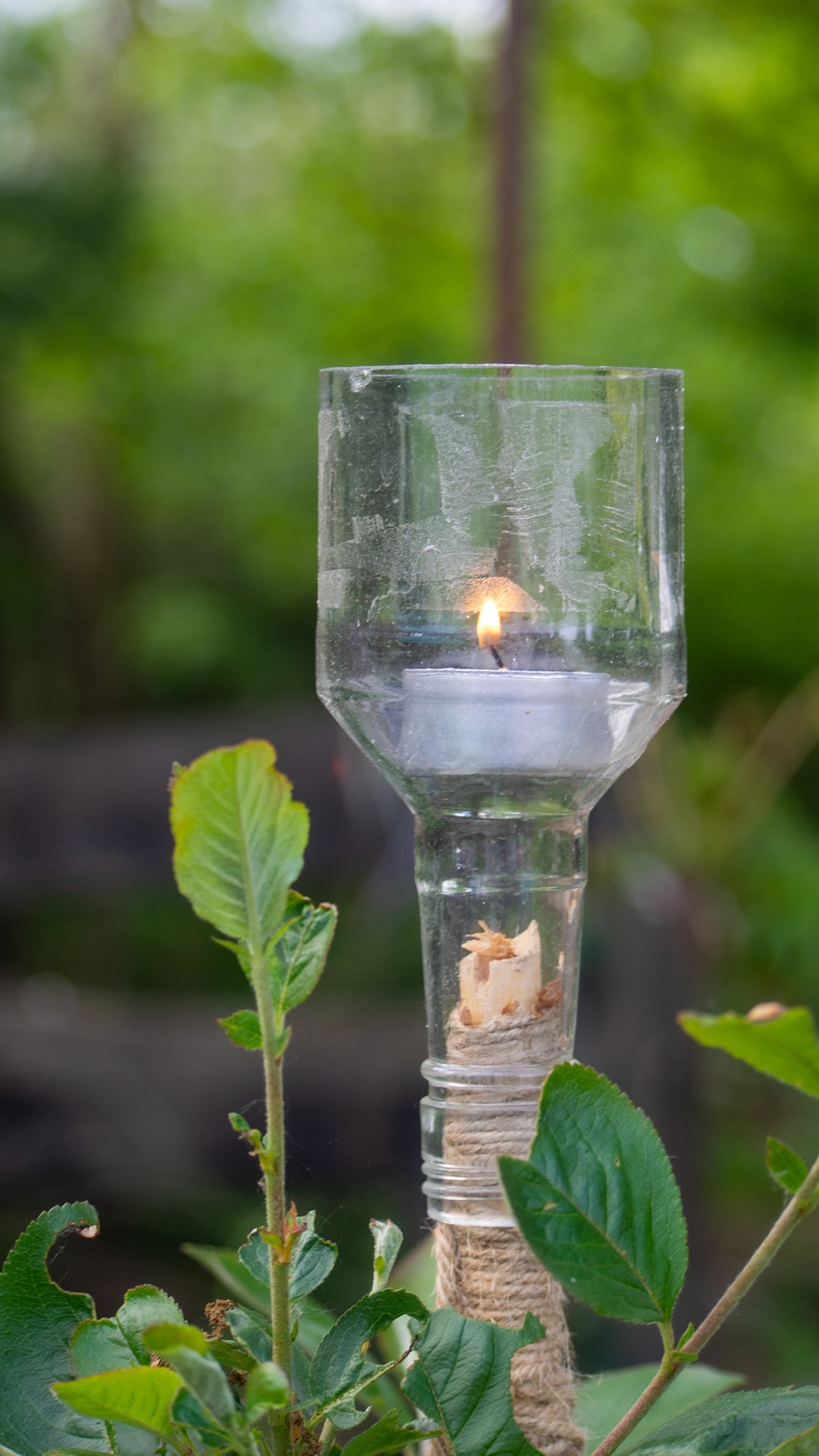Introduction
Welcome to the fascinating world of upcycling! In this article, we will embark on a journey to discover the lesser-known aspects of upcycling. Get ready to dive into the captivating history, explore the difference between upcycling and recycling, and uncover surprising benefits. We’ll also delve into unique upcycled creations, explore upcycling’s influence on popular culture, and showcase inspiring success stories. So, let’s jump right in!
1. The Fascinating History of Upcycling
Upcycling has a rich history that showcases human ingenuity and resourcefulness. From ancient civilizations repurposing materials to the modern-day upcycling movement, the practice has evolved over time. Let me share a personal story of my great-grandmother, who would turn worn-out clothes into beautiful quilts, imbued with memories and love.
As a child, I would often visit my great-grandmother’s cozy home. Nestled in a quaint countryside, she had an incredible talent for breathing new life into old fabrics. She would collect discarded clothing from family members and friends, carefully sorting them by color, pattern, and texture. To me, it seemed like a treasure trove of memories waiting to be transformed.
I vividly remember the afternoons spent with her in her sewing room. Surrounded by a symphony of fabrics and the soothing hum of her sewing machine, she would meticulously cut, arrange, and stitch together those worn-out garments. With each delicate stitch, she weaved stories and memories into the fabric, creating a quilt that would become a cherished family heirloom.
These quilts were not just blankets; they were works of art infused with love and history. As my great-grandmother shared stories of each fabric’s origin, it felt like I was touching a piece of our family’s past. From the vibrant floral dress that belonged to my mother to the faded denim overalls my uncle wore as a child, every square carried a tale of its own.
My great-grandmother’s quilts served as a testament to her resourcefulness and creativity. She taught me that even the most worn-out and discarded items could be transformed into something beautiful and meaningful. Her quilts not only provided warmth on cold nights but also connected us to our family’s past, preserving memories through the art of upcycling.
The legacy of my great-grandmother’s upcycled quilts continues to inspire me to this day. It reminds me of the power of upcycling to create something extraordinary from the ordinary and to infuse our creations with love and personal history. Her story serves as a gentle nudge to explore my own upcycling endeavors and cherish the value of repurposing.
As we delve deeper into the fascinating history of upcycling, let’s draw inspiration from the resourcefulness and creativity of those who came before us. Their stories remind us that upcycling is more than just a sustainable practice—it’s a way of honoring the past, nurturing our creativity, and building a brighter, more connected future.
By embracing the art of upcycling, we not only contribute to a more sustainable world but also carry forward the stories and memories of those who have shaped our lives. So, let’s celebrate the history of upcycling and continue this remarkable tradition with love, creativity, and a dash of humor.
2. Uncovering the Difference: Upcycling vs. Recycling
Let’s dive into the intriguing world of upcycling and understand its distinction from recycling. While both practices contribute to sustainability, upcycling takes a creative approach by transforming existing items into something of higher value. Recycling, on the other hand, involves breaking down materials to produce new ones. To illustrate this difference, imagine giving a worn-out bicycle tire a new purpose as a unique wall clock—a fun and imaginative way to upcycle!
3. Surprising Benefits of Upcycling
Upcycling goes beyond reducing waste—it brings an array of surprising benefits. Did you know that upcycling can save you money while adding a personal touch to your living space? It also fosters a sense of accomplishment and boosts your creative skills. As an avid upcycler, I can’t help but smile every time I transform a discarded item into a functional piece, giving it a new lease on life.
4. Unique Upcycled Creations
Prepare to be amazed by the remarkable upcycled creations that push the boundaries of creativity. Artists and designers around the world are turning ordinary objects into extraordinary masterpieces. From furniture made from reclaimed wood to jewelry crafted from repurposed materials, the possibilities are endless. Let me share a humorous incident where I attempted to create a lamp from mismatched teacups and saucers—it turned out to be a whimsical conversation starter!
5. Upcycling in Popular Culture
Upcycling has become a prominent feature in popular culture, influencing various aspects of our lives. Fashion designers are incorporating upcycled materials into their collections, making sustainable style accessible to all. Additionally, upcycled furniture and decor are finding their way into trendy homes, adding character and reducing environmental impact. Who would have thought that old vinyl records could be transformed into stylish wall art, bringing a touch of nostalgia to modern interiors?
6. Upcycling Around the World
From traditional crafts preserved by indigenous communities to innovative solutions emerging from urban centers, each culture has its unique approach to repurposing and breathing new life into materials. A few years ago – on my travels – I discovered a vibrant marketplace where artisans skillfully upcycled discarded glass bottles into stunning glassware—a true testament to the universality of upcycling.
7. Upcycling Challenges and Solutions
As with any creative endeavor, upcycling comes with its fair share of challenges. Sometimes, finding the perfect materials or dealing with limited resources can be tricky. However, these obstacles often lead to inventive solutions and unexpected discoveries. I recall a lighthearted experience when I attempted to transform an old wooden crate into a rustic side table but ended up with a wonky yet endearing piece that became the focal point of many conversations.
8. Unexpected Materials for Upcycling
Let’s think outside the box and explore unconventional materials for upcycling. Upcycling opens up a world of possibilities where even the most unexpected objects can find new life. Have you ever considered transforming discarded bicycle chains into chic jewelry or repurposing wine corks into unique coasters? The creative potential is boundless, and you’ll be surprised by the extraordinary transformations that can emerge from the most unlikely sources.
9. An Inspiring Upcycling Success Story
A friend who turned their passion for upcycling into a thriving business proved that sustainable practices can also be financially rewarding.
Inspired by their love for creativity and sustainability, my friend embarked on a journey of upcycling. Starting with small projects, they transformed discarded items into beautiful pieces of furniture and decor. Their unique creations caught the attention of friends and family, who were amazed by the craftsmanship and eco-friendly approach.
Encouraged by the positive response, my friend decided to take their passion to the next level. They started showcasing their upcycled creations at local markets and events. The response was overwhelming, and their business began to flourish. Word spread about their exceptional upcycling skills, and soon they were receiving custom orders and collaborations with interior designers.
What began as a hobby quickly turned into a full-fledged entrepreneurial venture. Today, my friend’s upcycling business is thriving, providing sustainable and stylish furniture and decor to individuals who appreciate the beauty of repurposed materials. Their success not only serves as an inspiration to others but also showcases the financial viability of sustainable practices.
This heartwarming story reminds us that pursuing our passions and making a positive impact on the environment can go hand in hand. Through upcycling, we not only unleash our creativity but also contribute to a more sustainable future.
10. Embracing the Upcycling Lifestyle
Now that you’re inspired to embark on your upcycling journey, it’s time to dive into practical tips and guidance to incorporate upcycling into your daily routine. Here are some helpful suggestions:
- Start Small: Begin with simple upcycling projects that align with your interests and available resources. It could be repurposing glass jars into storage containers or turning old t-shirts into reusable shopping bags.
- Explore Materials: Look around your home for items that can be upcycled. Consider old furniture, discarded fabrics, or even broken ceramics that can be transformed into mosaic art. Get creative with what you already have.
- Join Upcycling Communities: Engage with upcycling communities both online and offline. Connect with like-minded individuals who share ideas, tips, and inspiration. Join forums or social media groups dedicated to upcycling and participate in discussions.
- Upcycle with Friends and Family: Organize upcycling parties or workshops with friends and family. Collaborate on projects and exchange ideas. It’s a great way to bond while promoting sustainable practices.
- Learn New Techniques: Expand your upcycling skills by learning new techniques. Attend workshops, watch online tutorials, or read books dedicated to upcycling. Enhance your knowledge and discover innovative ways to repurpose materials.
- Think Outside the Box: Embrace a mindset of creativity and think beyond the obvious when it comes to upcycling. Look for unconventional materials and envision new purposes for them. For example, repurpose old vinyl records as unique wall clocks or transform vintage suitcases into stylish side tables.
- Document Your Upcycling Journey: Capture your upcycling projects through photographs or videos. Share your creations on social media platforms or start a blog to inspire others and document your progress.
- Support Local Upcycling Initiatives: Explore local businesses or organizations that specialize in upcycling. Purchase upcycled products or collaborate with upcycling artisans. By supporting local initiatives, you contribute to the growth of the upcycling movement.
- Spread Awareness: Share your upcycling experiences and knowledge with others. Talk about the environmental benefits and the creative potential of upcycling. Inspire others to embrace sustainable practices and help create a positive impact on the planet.
- Embrace Imperfection: Remember that upcycling is a journey of creativity and experimentation. Embrace imperfections and learn from the process. Each upcycled creation carries its unique story and character, making it even more special.
With these practical tips, you’ll be well on your way to embracing the upcycling lifestyle and making a positive impact on the environment. So, go ahead and embark on this creative and sustainable journey—it’s time to unlock your upcycling potential and make a difference, one upcycled creation at a time.
Conclusion
I hope you’ve gained a fresh perspective on this captivating practice. Remember, upcycling is not just about repurposing items—it’s a way of life that promotes creativity and sustainability. So, let your imagination run wild, unleash your creativity, and embark on your own upcycling adventures. Embrace the joy of transforming the ordinary into the extraordinary, and be a part of the positive change we all seek.
FAQs
How did upcycling originate?
Upcycling has its roots in the human instinct to repurpose and find new uses for existing materials. Throughout history, people have repurposed items out of necessity or creative expression. While it’s challenging to pinpoint a specific origin, upcycling practices can be traced back to various cultures and time periods. From patching quilts to refurbishing furniture, upcycling has evolved into a global movement fueled by environmental consciousness and creativity.
What’s the difference between upcycling and recycling?
Upcycling and recycling are both important practices in sustainable living, but they have distinct approaches and objectives. Upcycling involves transforming old or discarded items into products of higher value or utility. It focuses on creativity and giving new life to existing materials. On the other hand, recycling involves breaking down materials to produce new products. It aims to conserve resources and minimize waste by turning old items into raw materials for manufacturing processes.
Can anyone start upcycling, or is it only for creative individuals?
Absolutely! Upcycling is for everyone, regardless of artistic abilities. It’s a creative and inclusive practice that encourages individuals to reimagine and repurpose objects in their own unique way. You don’t need specialized skills or expertise to start upcycling. All it takes is an open mind, a willingness to experiment, and a desire to reduce waste while unleashing your creativity. So, don’t hesitate to give it a try and discover the artist within you.
How can upcycling benefit the environment?
Upcycling offers several environmental benefits by reducing waste, conserving resources, and minimizing the energy and emissions associated with manufacturing new products. When we upcycle, we divert materials from landfills and reduce the demand for new resources. By repurposing and extending the lifespan of existing items, upcycling contributes to a more sustainable and circular economy, promoting resourcefulness and waste reduction.
Where can I find inspiration for upcycling projects?
Inspiration for upcycling projects can be found everywhere, from online platforms and social media communities dedicated to upcycling to local thrift stores, flea markets, and community events. Explore DIY blogs, upcycling tutorials, and magazines that showcase creative ideas and techniques. Engage with like-minded individuals through forums and groups, attend workshops or upcycling events in your area, and let the world around you inspire your own unique upcycling endeavors.




